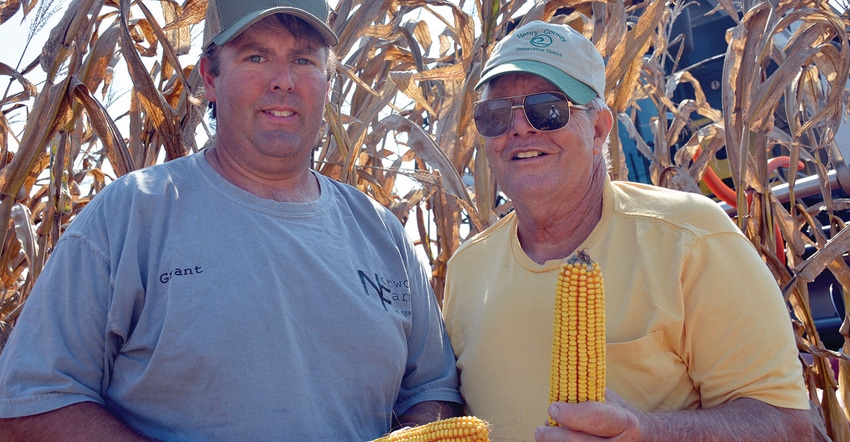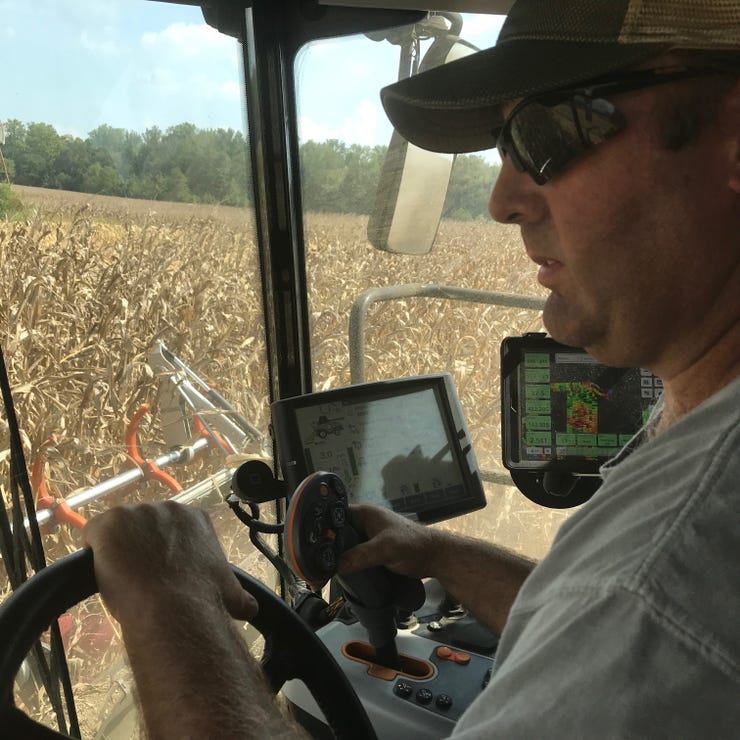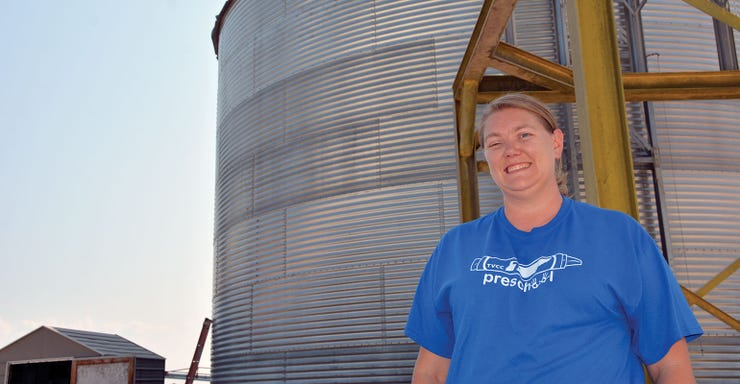
Don Norwood and his son, Grant, stood in the scant shade of mature corn stalks, taking sanctuary from some of the unusually late September heat, and talked about measures they take to ensure a sixth generation of Norwoods can farm this piece of Henry County, Tenn., cropland.
Sustainable agriculture makes sense to Don, 72, and to son, Grant, 41, who farm 3,000 acres of corn, soybeans and wheat on a farm that’s been in the family since 1894.
Rotation, cover crops and no-till are the backbone of the conservation program, but catch basins, soil moisture sensors and residue management also play roles.
Don and Grant stood next to their New Holland combine, its distinctive yellow color only faintly visible through the dust accumulated through three weeks of corn harvest, and explained that a week before they had seeded a cover crop by air in the field they are cutting.
“We sometimes seed by air and we always drill some,” Grant says. Don adds that air seeding works better in corn than in beans.
“We use a five-way mix,” Grant says. “That’s required in the government cover crop program.”
They include wheat, cereal rye, spring oats, clover, and either radishes or collards. “We have to have a grass, a legume and a brassica,” Grant says.

Corn Harvest
Cover Crop Advantages
Don explains the advantage of a cover crop. “Erosion is the primary thing. We get more root mass, more organic matter and more microorganisms with a cover crop. We see a lot of earthworms.
“We were planting cover crops long before the government got involved, for more than 10 years,” he says.
They say it’s hard to quantify but believe cover crops give them a little yield bump. “It takes time,” Grant says, “but I think we are starting to see a yield advantage.”
It’s more apparent in years like 2019, Don says, with hot weather late in the season. “Crops hold up better in these conditions as opposed to fields without cover.”
He adds that the 2019 September is the hottest he can remember. “We’ve had hot days in September before, but not for the entire month. I think all but one day has topped 90 degrees.”
100 Percent No-till
They also plant 100 percent no-till. “We’ve been farming no-till since I was born,” Grant says, “but we have been 100 percent no-till for 20 years or more.”
In addition to the conservation advantages of cover crops and no-till, the Norwoods say the practices help control weeds, especially pigweed. They don’t till up weed seed and the continuous cover limits germination.
“With wheat, corn, soybeans and cover crops, we have something on the ground year-round,” Grant says.
They say catch basins play crucial roles in reducing runoff. “We’ve built some 200 catch basins on the farm,” Grant says.
He’s also working with a group called AgLaunch, an entity created to help start-up companies field test new products. Farmers volunteer to take part in the field trials.
“We’re looking at soil moisture sensors from GroGuru,” Grant explains. “Soil sensors will show soil moisture levels and help us know when to irrigate and when to shut it off. We can use water more efficiently.”
They have center pivots on about 800 acres, one-third of the land they farm. “That’s about all the land that’s feasible to irrigate,” Don says.
Sharing labor and equipment also aids efficiency. “We each have our own farms,” Don says, “but we operate as one unit.”
“I have my land and Dad has his,” Grant adds, “but we treat it as one to get things done economically.”

Cutting Corn
Season’s Challenges
Working efficiently was a challenge for the 2019 crop. “We had rain early,” Don says. “Fortunately, we missed the rain from the [June] hurricane. We got just a few tenths, but some neighbors got a lot of rain. We were dry for a while, but we got 4 inches in August, 3 inches in one hour and another inch the next day.”
That rain was too late to help the corn crop, they say, but it helped the beans.
Don says corn made it through some dry weeks and some hot temperatures. “We did not get a lot of rain on corn, but the rain was timely,” he says. Stand was “near perfect, and it made it through those hot spells. It’s a good crop.”
They were about half done with harvest on Sept. 17. “The crop is equally as good as anything we’ve made before,” Don says.
They are less optimistic about the soybeans. “Beans look pretty good for the shape they’re in,” Grant says.
“All the beans were planted late,” Don adds. “I’m surprised at how they are holding up under this heat. But none are made yet. It’s hard to tell what they will do when it’s hot and dry.”
As the Norwoods were harvesting the corn, they were simultaneously loading grain into storage bins out of the field and unloading bins to deliver to market. They have about 180,000-bushel capacity to store corn and beans.
Grant’s wife, Crystal, who does much of the computer data management, says local markets offer good opportunities for corn. “We sell a lot to a hog farm, the largest in the state, and to the ethanol plant. We are also close to river ports.”

On-Farm Storage
Positive Basis
Don says the local markets and proximity to both the Tennessee and Mississippi rivers keep the basis positive for corn. “We have a strong basis in our area,” he says.
Those storage bins also aid harvest efficiency. “We don’t have to wait in line at the elevator,” Grant says.
Before Grant climbed back into the combine and Don headed to the shade, they pondered the year and what, if any, changes they would anticipate for 2020.
“Nothing jumps out,” Don says. “We always tweak things a little bit, but nothing big comes to mind.”
“I want to add more ground sensors,” Grant says. “I like what those are showing us.”
Don wanted to show this writer where the farm got started and we drove to a small log cabin, set among some ancient walnut trees.
“This was my great, great grandparents’ house,” he says. “They came here in 1894.” He points to a “Century Farm” sign in a nearby shed and looks across a vista of soybeans, corn and newly harvested ground stretching to the horizon.
“That’s my favorite view,” he says.
And he hopes the next generation and generations after that will enjoy that scenic background he and Grant are working to preserve.
About the Author(s)
You May Also Like






